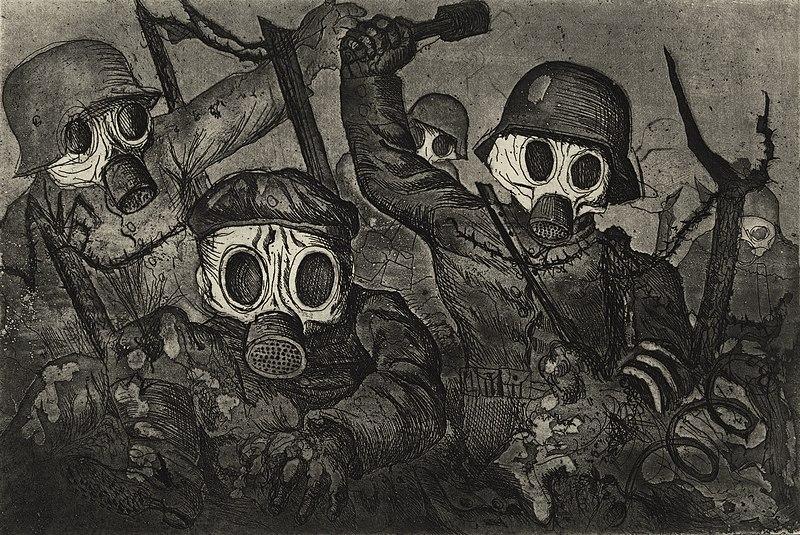Tasks: Gassed by John Singer Sargent

Study the painting carefully. Write down your observations.
(Your computer will have a zoom-in function that you can use. If you are unsure how to use it, ask your teacher or a classmate.)
Give a detailed description of the procession of men that is at the centre of the painting.
Are the men lying on the ground dead or alive? Explain what you observe.
On the right-hand side we see ropes that come down to the ground. What do you think these ropes are?
If you study the background behind the central row of men, you will see people playing football. Why do you think the artist has included this in the picture?
On the right-hand side of the painting, we see the sun going down. Why do you think the artist has included the setting sun?
If you look closely at the sky on the right-hand side of the painting you will see airplanes. What are the airplanes doing? Why do you think the airplanes are included in the painting?
What sort of mood does the painting convey? How does the artist create this mood?
Work with a partner. Explain your views as fully as possible.
Does this painting make the viewer understand the horrors of war?
Do you think the painting offers a realistic view of what it was like after a gas attack in World War I?
What message does this painting try to convey?
Do you like the painting?
Pick one of the tasks and write a longer text. Remember to include references and a source list.
What role should art play in recording historic events? Write a discussion text where you make reference to John Singer Sargent's painting Gassed and at least one other work of art.
Write a text where you discuss whether literature and art can give us a deeper understanding of World War I. Make reference to Wilfred Owen's poem Dulce et Decorum Est and John Singer Sargent's painting Gassed in your text.
Compare John Singer Sargent's Painting Gassed with Otto Dix's painting Shock Troops Advance Under Gas, paying special attention to the mood and message of each painting.

Related content
Dulce et Decorum Est is a poem by Wilfred Owen, first published in 1919.